 Katy Barwick Katy Barwick
London, United Kingdom
Talk: C11.4 Defective presynaptic choline transport underlies hereditary motor-neuropathy
Session: C11 Neurological and Sensory Diseases: From Gene to Function
Date: Monday, June 25, 13:00 hrs
Date and city of birth
26-02-1988, London, UK What is your current position?
MPhil/PhD student at St. Georges University of London. I am currently investigating the genetic and molecular basis of distal hereditary motor neuropathies. Why did you choose a career in genetics?
My interest genetics was sparked whilst undertaking my BSc research project. I was excited to be involved in such a vast and rapidly evolving field. I subsequently completed my MRes in Biomedical Science specialising in genetics which provided a platform for my PhD research project. It is fascinating to investigate basis of hereditary disease and contribute to the understanding of the underlying molecular processes. What is so interesting about the research you are presenting at ESHG 2012?
The identification of a novel disease causing gene in just one family affected with a rare form of distal hereditary motor neuropathy has brought to light a molecular pathway that has never before been implicated in distal motor neuron degeneration. Not only have these findings allowed us to take a new approach to the investigation of the genetic and molecular basis of this group of this group of diseases, but they have also widened the spectrum of diseases associated with NMJ malfunction. | | 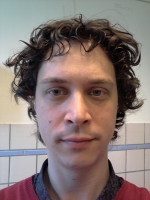 Bert Callewaert Bert Callewaert
Ghent, Belgium
Talk: C09.5 Comprehensive clinical and molecular analysis of 12 families with type I recessive cutis laxa
Session: C09 Clinical Genetics of Bone and Connective Tissue Disorders
Date: Monday, June 25, 13:00 hrs
Date and city of birth
April 7th, 1979, Sint-Niklaas (Belgium) What is your current position?
I am a pediatrian/clinical geneticist at Ghent University Hospital, Belgium. I am also a postdoctoral research fellow of the Fund for Scientific Research-Flanders. Why did you choose a career in genetics?
It is an exciting area in which clinical work and research (both funcamental and clinical research) can be easily combined. What is so interesting about the research you are presenting at ESHG 2012?
This is the first study to shed light on the different phenotypes within type 1 recessive cutis laxa and provides further insights into microfibillar assembly. |
| | | |
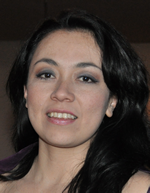 Martha Castano-Betancourt Martha Castano-Betancourt
Rotterdam, Netherlands
Talk: PL2.5 Genome-wide association and functional studies identify the DOT1L gene to be involved in cartilage thickness and hip osteoarthritis
Session: PL2 What's New?
Date: Saturday, June 23, 18:30 hrs
Date and city of birth
31-12-1974, Ibague, Colombia What is your current position?
PhD student Why did you choose a career in genetics?
I started in epidemiology of osteoarthritis. However, I heard around about how much difficult was to find genes that explained the high heritability of the disease. From that moment I started to study genetics epidemiology and to think about it. It was like an invitation for me. What is so interesting about the research you are presenting at ESHG 2012?
I present here a different approach to study the genetics of osteoarthritis. It is one of the possible alternative ways to find genes implicated in osteoarthritis and understand more this complex disease. | | Claudia Catacchio
Bari, Italy
Talk: C06.1 The evolution of African great ape subtelomeric heterochromatin and the fusion of human chromosome 2
Session: C06 Genome Evolution and Variation
Date: Sunday, June 24, 13:00 hrs Date and city of birth
June 20, 1984 What is your current position?
Postdoctoral researcher at the Department of Biology, University if Bari Why did you choose a career in genetics?
Ever since my childhood I have always been fascinated with how things worked. Among all the different aspects of nature, the human being looks to me as the most intriguing of all and working to understand why we are what we are and what creates differences among us and between us and the other species is what I like the most. To me, genetics is the answer. What is so interesting about the research you are presenting at ESHG 2012?
The research I am presenting provides molecular resolution to one of the evolutionary conundrums regarding human and African great ape chromosomes. We use targeted sequencing and phylogenetic analysis to reveal the cytogenetic mechanisms underlying the onset of the subterminal heterochromatin in chimpanzees and gorillas, which are absent in orangutans and humans | |
| | | |
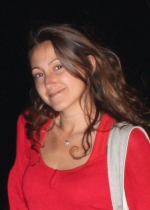 Eleonora de Klerk Eleonora de Klerk
Leiden, Netherlands
Talk: C06.6 Poly(A) binding protein nuclear 1 (PABPN1) levels affect alternative polyadenylation
Session: C06 Genome Evolution and Variation
Date: Sunday, June 24, 13:00 hrs
Date and city of birth
29-07-1983 Catania What is your current position?
PhD student Why did you choose a career in genetics?
Genetics can explain half of what we are, of what we were and what we will be. Its complexity, its own laws and the logical behind it make this field unique for an endless discovery. What is so interesting about the research you are presenting at ESHG 2012?
Our research focuses on alternative polyadenylation, which is a layer of regulation of gene expression at post transcriptional level. How alternative polyadenylation events are regulated is still unclear. We discovered a new protein involved in alternative polyadenylation and interestingly a mutation of this protein is involved in a rare muscle disorder.<link _blank external-link-new-window> | | Olivier Delaneau
Oxford, United Kingdom
Talk: C17.2 Haplotype phasing using next-generation sequencing reads
Session: C17 Statistical Genetics
Date: Tuesday, June 26, 11:00 hrs <link _blank external-link-new-window> Add your profile Add your profile |
| | | |
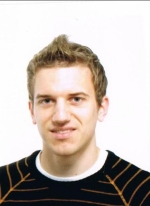 Sascha Dierks Sascha Dierks
Göttingen, Germany
Talk: C02.5 Leupaxin mediates cytoskeleton remodeling in prostate cancer cells
Session: C02 Basic Research in Cancer Genetics
Date: Sunday, June 24, 13:00 hrs
Date and city of birth
08.10.1986 Göttingen
What is your current position?
I am a student in the PhD program molecular medicine in the department of Human Genetics at the University Medical Center in Göttingen. I am preparing my PhD Thesis entitled “Analysis on the mechanisms underlying the leupaxin-mediated progression of prostate cancer” in the laboratory of Dr. S. Kaulfuß. Why did you choose a career in genetics?
I was exposed to genetics as a high school student, since then I have always been fascinated by the molecular mechanisms of life and the diseases that are caused by their dysfunction. I found it very challenging to understand these complex mechanisms and to take advantage of them to cure genetic diseases. In addition, the major discoveries and the extensive growth in this area in the recent years were very promising for the future. What is so interesting about the research you are presenting at ESHG 2012?
In order to metastasize, tumor cells have to acquire certain characteristics. Leupaxin, the protein I will be talking about, is involved in the invasion and migration of prostatic tumor cells. Elucidation of the underlying mechanisms could display a promising link for the development of new therapeutic approaches. | | 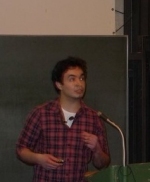 Nady El Hajj Nady El Hajj
Wuerzburg, Germany
Talk: C16.5 Metabolic reprogramming of the epigenome by intrauterine exposure to gestational diabetes
Session: C16 Prenatal and Reproductive Genetics
Date: Tuesday, June 26, 11:00 hrs
Date and city of birth
23.09.1983, Beirut, Lebanon What is your current position?
Postdoctoral researcher at the Institute of Human Genetics in Würzburg, Germany.
Why did you choose a career in genetics?
Honestly, I never made a conscious decision on choosing my career. A series of events led me to where I am now!! Luckily, I totally enjoy research in the field of genetics as well as campus life.
What is so interesting about the research you are presenting at ESHG 2012?
The presented research provide evidence that gestational diabetes has an effect on the epigenetic regulation of developmentally important genes in the offspring. This might provide a link between in-utero exposure to gestational diabetes and metabolic disorders in later stages of life. |
| | | |
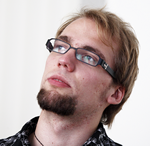 Tõnu Esko Tõnu Esko
Tartu, Estonia
Talk: C08.4 Zooming in on causal variants by eQTL meta-analysis in 5,311 samples
Session: C08 Functional Genomics
Date: Monday, June 25, 13:00 hrs
Date and city of birth
27.01.1985 Vändra/Estonia What is your current position?
PhD student at Estonian Genome Center, University of Tartu Why did you choose a career in genetics?
At the beginning of my scientific career I had three possible professions in mind - a psychologist, a medical doctor or a human geneticist. I chose genetics as it enables to understand the underlying concepts of diseases and it is all written in DNA. Also a scientific discovery has the potential to advance the health outcome of many people simultaneously. What is so interesting about the research you are presenting at ESHG 2012?
Our large eQTL study in whole-blood samples has identified a cis-regulatory effect for more than half of the genes. The eSNPs are in most cases non-coding, which indicates that future fine-mapping studies of complex traits should look more outside the genes. | | 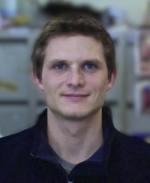 Laurent Francioli Laurent Francioli
Utrecht, Netherlands
Talk: C07.5 Trio-aware variant calling for accurate genotyping and de novo mutation detection
Session: C07 NGS Going Clinic
Date: Monday, June 25, 13:00 hrs
Date and city of birth
23.03.1983, Lausanne, Switzerland What is your current position?
PhD student in genetics at University Medical Center Utrecht Why did you choose a career in genetics?
I believe that high-throughput sequencing technologies will revolutionize medicine in the coming years. The analysis and interpretation of these data is the current bottleneck in understanding the role of genetics in diseases and their treatment, which makes it the most fascinating challenge for computer engineers like myself to work on. What is so interesting about the research you are presenting at ESHG 2012?
Pedigree-aware calling from NGS data can potentially enable more accurate genotyping and phasing than deeper sequencing of unrelated individuals at similar cost. Focusing on trios, our method for jointly calling genotypes in pedigrees lead to significant increase in genotyping accuracy (compared against individual calling) and reliable de novo mutation detection. |
| | | |
Lude Franke
Groningen, Netherlands
Talk: C10.1 Genomic instability in 25,000 cancer samples: A limited number of copy number aberration configurations
Session: C10 Clinical Aspects in Cancer Genetics
Date: Monday, June 25, 13:00 hrs <link _blank external-link-new-window> Add your profile Add your profile | | 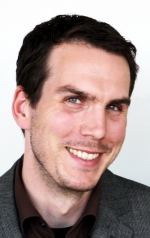 Lars Fritsche Lars Fritsche
Regensburg, Germany
Talk: C14.2 Seven New Loci Associated with Age-Related Macular Degeneration
Session: C14 Genomics of Common Disorders
Date: Tuesday, June 26, 11:00 hrs
Date and city of birth
January 14, 1978; Lindau (B), Germany What is your current position?
Postdoctoral research fellow at the Institute of Human Genetics (University of Regensburg, Germany)
Why did you choose a career in genetics?
Actually, this was not a choice but the happy coincidence of: (i) an enquiring mind; (ii) a strong affinity for biology, medicine as well as informatics; and most importantly, (iii) me being with i and ii in the right place at the right time.
What is so interesting about the research you are presenting at ESHG 2012?
We have identified new susceptibility loci for age-related macular degeneration (AMD), as well as differences in genetic contributions to disease risk, and we have prioritized potentially functional variants for further study. This will ultimately enable us to pursue a larger range of disease-specific targets for developing new therapeutic AMD interventions. |
| | | |
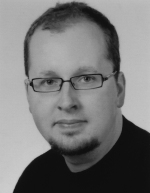 Lutz Garbes Lutz Garbes
Cologne, Germany
Talk: C01.6 SMA patients show concordant responses to valproic acid from blood to neurons while nonresponsivness is facilitated by CD36
Session: C01 New Genes and New Therapies in Clinical Genetics
Date: Sunday, June 24, 13:00 hrs
Date and city of birth
1980/12/02 in Cologne, Germany What is your current position?
Currently, I am research Post-Doc working in our Diagnostic Department. Having this dual function, I try to connect both routine diagnostics with up-to-date science and technologies, such as NGS.
Why did you choose a career in genetics?
I am motivated by two different things: First, the idea that what I am doing can impact patients' life. Second, the curiosity to discover and understand new pieces of the life's biggest puzzle - the DNA.
What is so interesting about the research you are presenting at ESHG 2012?
Probably the most important point is the proof that response to valproic acid is concordant in blood, fibroblasts in neurons. This is a big leap for the therapy of spinal muscular atrophy, since it implies that treatment outcome can reliably monitored in patient's blood. Furthermore, we identified the protein directly controlling patient's VPA response. | | 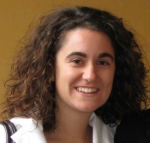 Alice Ghidoni Alice Ghidoni
Pavia, Italy
Talk: C16.4 Genetic basis of intrauterine fetal demise: the role of cardiac channelopathies.
Session: C16 Prenatal and Reproductive Genetics
Date: Tuesday, June 26, 11:00 hrs
Date and city of birth
03/12/1984 Piacenza, Italy What is your current position?
PhD Student in Molecular Biology and Biotechnology at IUSS (Institute of Advanced Studies), University of Pavia
Why did you choose a career in genetics?
Genetics, as other scientific fields, gives the possibility to learn every date and to deeply investigate a topic. A lot of genes, pathways, diseases, have not been completely described yet, and it is fascinating understand something new. I love stay in lab, as well. Finally, I chose Human Genetics because any discovery, applied to clinical medicine, can help people.
What is so interesting about the research you are presenting at ESHG 2012?
Despite extensive post-mortem investigations, nearly 50% of intrauterine fetal demises (IUFDs) remain unexplained. The goal of this study is to understand if cardiac channelopathies may contribute to pre-natal mortality, to provide a prevalence of this phenomenon and to better define fetal conditions that may lead to electrical instability during this susceptible period of life. |
| | | |
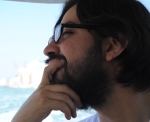 Javier Gutierrez-Achury Javier Gutierrez-Achury
Groningen, Netherlands
Talk: C17.1 The MHC association to celiac disease can be mostly explained by six amino acids in the HLA-DQ heterodimer
Session: C17 Statistical Genetics
Date: Tuesday, June 26, 11:00 hrs
Date and city of birth
27-12-1982 Neiva - Colombia
What is your current position?
PhD Student at the Department of Genetics - University Medical Hospital Groningen - The Netherlands Why did you choose a career in genetics?
Because is field in a continuos expansion, not only about work positions, but just imagine all the kind of knowledge you can get with this information. Apart of this.. makes me happy :) What is so interesting about the research you are presenting at ESHG 2012?
Despite that is a very focus research that involve a very specific complex trait, we are showing that is possible that in the pathogenesis of Celiac Disease could more factors involve than the ones as been described till now, all this with genetic information. This knowledge could change the some old thoughts about the disease | | 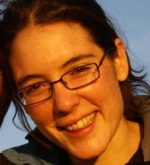 Maria Gutierrez-Arcelus Maria Gutierrez-Arcelus
Geneva, Switzerland
Talk: PL2.6 Insights into tissue-specific mechanisms of gene regulation involving genetic variants and DNA methylation
Session: PL2 What's New?
Date: Saturday, June 23, 18:30 hrs
Date and city of birth
20-04-1987 What is your current position?
I am a PhD student in the University of Geneva, working in the Functional Population Genomics lab of Manolis Dermitzakis.
Why did you choose a career in genetics?
Since I was in middle school I was very curious about understanding how life works. Later on I realized that studying DNA meant going to the origin of many of the questions I had. I was also impressed by the applications this had on human health.
What is so interesting about the research you are presenting at ESHG 2012?
I think that the research I am presenting is changing our view of the characteristics of an epigenetic mark, DNA methylation, and together with genetic variation data, we are getting new insights into the regulatory landscape of the genome. This is important for better understanding complex traits. |
| | | |
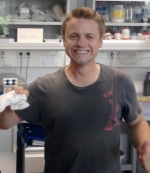
Tobias Haack
Munich, Germany
Talk: C12.3 Exome sequencing identifies nonsense mutations in AGK as a cause of Sengers syndrome
Session: C12 Metabolic Diseases: From Gene to Function
Date: Monday, June 25, 13:00 hrsDate and city of birth
05/03/1982 in Überlingen, Germany What is your current position?
Postdoc / Training in medical genetics Why did you choose a career in genetics?
After 1.5 years shift work at the ICU my need for action at 3.00 a.m. slowly disappeared. Albeit a research career in Human genetics still offers the opportunity to work until midnight (to meet some deadlines) it combines the possibility to do what your are interested in a more creative way and surrounding.
It offers the chance for new discoveries and personal as well as professional freedom. What is so interesting about the research you are presenting at ESHG 2012?
Exome sequencing has become a standard tool for disease gene identification. Nevertheless, our study underscores how this approach together with screening of additional patients sharing the same phenotype can be efficiently exploited to elucidate the molecular genetic cause of a syndrome first described in the 70s. The physiological role of the mutant protein highlights the importance of mitochondrial lipid metabolism in human disease and opens interesting new perspectives for future research and therapy. | | Youssef Hibaoui
Geneva, Switzerland
Talk: C04.6 Modelling neurogenesis impairment in Down syndrome using induced pluripotent stem cells from monozygotic twins discordant for trisomy 21
Session: C04 Cytogenetics
Date: Sunday, June 24, 13:00 hrs <link _blank external-link-new-window> Add your profile Add your profile | |
| | | |
Cédric Howald
Lausanne, Switzerland
Talk: C08.1 The ENCODE effort combining RNA-seq and RT-PCR-seq allows to catalog thousands of novel lncRNAs
Session: C08 Functional Genomics
Date: Monday, June 25, 13:00 hrs <link _blank external-link-new-window> Add your profile Add your profile | | 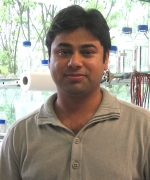 Muhammad S. Hussain Muhammad S. Hussain
Cologne, Germany
Talk: C13.4 A truncating mutation of CEP135 causes primary microcephaly and disturbed centrosomal function
Session: C13 Intellectual Disability: From Gene to Function
Date: Tuesday, June 26, 11:00 hrs
Date and city of birth
10th March, 1981, Muzaffargarh (Pakistan)
What is your current position?
Currently, I am working as a postdoctoral fellow in a tandem project named “Molecular basis of disturbed neurogenesis in Primary Microcephaly” between Cologne Center for Genomics (CCG) and Institute of Biochemistry, University of Cologne.
Why did you choose a career in genetics?
Since my school, the Biology was a fascinating subject, in which I got the highest marks. I was really impressed by the work of Gregor Johann Mendel, James D. Watson and Francis Crick. Due to high proportion of cousin marriages in the areas near to my village, genetic disorders like primary microcephaly and polydactyly were quite common. Five different families in these areas with genetic aberrations urged me to work in the field of Genetics.
What is so interesting about the research you are presenting at ESHG 2012?
I will present about MCPH8 (the novel locus of primary microcephaly) and its underlying genetic cause in CEP135 (centrosomal protein 135kDa), identified from a cohort of Pakistani families. This study strengthen the role of centrosome in the development of MCPH and place CEP135 among the essential components of this important organelle in particular for a normal neurogenesis. |
| | | |
Valentina Iotchkova
Oxford, United Kingdom
Talk: C17.3 Bayesian multivariate phenotype modeling for genome-wide association studies.
Session: C17 Statistical Genetics
Date: Tuesday, June 26, 11:00 hrs <link _blank external-link-new-window> Add your profile Add your profile | | Juha Karjalainen
Groningen, Netherlands
Talk: C08.6 A gene co-regulation network based on 80,000 samples allows for accurate prediction of gene function
Session: C08 Functional Genomics
Date: Monday, June 25, 13:00 hrs Date and city of birth
28th March 1983, Mikkeli What is your current position?
PhD Student Why did you choose a career in genetics?
Because life itself is the most interesting thing there can possibly be to study. What is so interesting about the research you are presenting at ESHG 2012?
Previously unknown gene functions can give new insight into biological pathways and diseases. |
| | | |
Maya Kasowski
New Haven, United States
Talk: C06.5 Variation in transcription factor binding among humans
Session: C06 Genome Evolution and Variation
Date: Sunday, June 24, 13:00 hrs <link _blank external-link-new-window> Add your profile Add your profile | | 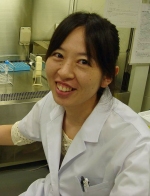 Rie Kawamura Rie Kawamura
Matsumoto, Japan
Talk: C04.3 Nonlinear and nonrandom genome organization of SNRPN, UBE3A, and GABRB3 in the normal human nucleus by three-color 3D-fluorescence in situ hybridization
Session: C04 Cytogenetics
Date: Sunday, June 24, 13:00 hrs
Date and city of birth
October 26th, Gifu, Japan
What is your current position?
I am a PhD candidate at Shinshu University.
Why did you choose a career in genetics?
When I looked human chromosomes in a microscope for the first time, I was really touched by the fantastic sight. That led to my interest in cytogenetics. My present interest is the relationship between the spatial organization of the genome and genomic function in the nucleus.
What is so interesting about the research you are presenting at ESHG 2012?
We demonstrate that the SNRPN, UBE3A, and GABRB3 genes have non-linear and non-random curved spatial positioning in the nucleus by three-color 3D-FISH. And I will talk about the differences of the SNRPN-UBE3A distances between the alleles as the possibility of new epigenetic evidence related to nuclear organization and gene expression. |
| | | |
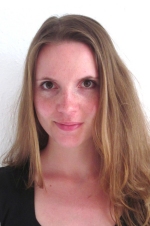 Katharina Keupp Katharina Keupp
Cologne, Germany
Talk: C03.3 Mutations in distinct domains of BMP1 cause Osteogenesis Imperfecta with variable bone phenotypes
Session: C03 Skeletal Disorders: From Gene to Function
Date: Sunday, June 24, 13:00 hrs
Date and city of birth
12.05.1985 in Bochum
What is your current position?
PhD student Why did you choose a career in genetics?
The field of genetics is multifaceted with a broad spectrum of research areas, which makes genetic science very attractive. Especially human genetics arouse my special interest, because it is a perfect combination of biological and medical aspects and has a high impact on fundamental disease research and developing new therapeutic strategies. What is so interesting about the research you are presenting at ESHG 2012?
Our study presents on the one hand a novel genetic cause for high bone mass phenotype osteogenesis imperfecta and provides on the other hand evidence for a heterogeneous genotype-phenotype-correlation in patients with BMP1 mutations in different functional domains. | | 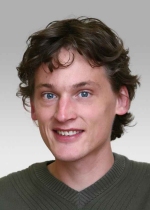 David Koolen David Koolen
Nijmegen, Netherlands
Talk: C01.1 Mutations in the chromatin modifier gene KANSL1 cause the 17q21.31 microdeletion syndrome.
Session: C01 New Genes and New Therapies in Clinical Genetics
Date: Sunday, June 24, 13:00 hrs
Date and city of birth
22-06-1976, Den Haag
What is your current position?
Clinical Geneticist Why did you choose a career in genetics?
To me, the combination of clinical work and research is fascinating. There is still a lot to be discovered and now, we have novel techniques at our hands to answer many unsolved questions. What is so interesting about the research you are presenting at ESHG 2012?
The study that I'm presenting at ESHG 2012 shows that haploinsufficiency of KANSL1 is sufficient to cause the 17q21.31 microdeletion syndrome. Interestingly, the functional data of KANSL1 suggest promising avenues for therapy. |
| | | |
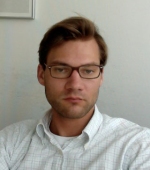
Peter Krawitz
Berlin, Germany
Talk: C13.1 Mutations in PIGO, a member of the GPI anchor synthesis pathway, cause hyperphosphatasia with mental retardation syndrome
Session: C13 Intellectual Disability: From Gene to Function
Date: Tuesday, June 26, 11:00 hrsDate and city of birth
Augsburg What is your current position?
Wissenschaftlicher Mitarbeiter und Assistenzarzt in the Medical and Human Genetics Department at Charité Universitätsmedizin Why did you choose a career in genetics?
Besides medicine I also studied physics. In Genetics I can combine both backgrounds and I am fascinated about how this field of medicine will change our health care What is so interesting about the research you are presenting at ESHG 2012?
GPI-anchor deficiencies are a new class of congenital glycosylation defects. Products of over 30 genes participate in the GPI-anchor synthesis and up to date for 6 of these genes monogenic disorders are known. It is challenging to investigate the genotype - phenotype correlations of these pathway disorders. | | 
Anat Kreimer
New York, United States
Talk: C17.5 Variants in exons and in transcription factors affect gene expression in trans.
Session: C17 Statistical Genetics
Date: Tuesday, June 26, 11:00 hrsDate and city of birth
July 2nd 1981, Rehovot, Israel What is your current position?
PhD candidate at Columbia University, USA Why did you choose a career in genetics?
Genetics explains the variation and similarity between members of a single species as well as the evolution and the phylogenetic relationships among organisms. Genetics research can be applied to understand how mutations affect different biological mechanisms and is used to advance the study of diseases along with personalize medicine. The sequencing of the human genome and the improvement in sequencing techniques in recent years have produced large amounts of data that now need to be analyzed in sophisticated computational methods. The diversity, challenge and applicability of this filed have driven me to choose a career in Genetics. What is so interesting about the research you are presenting at ESHG 2012?
We demonstrate that by combining association data with information on PPI network it is possible to unravel topological properties for trans association types. I feel that each such step makes us closer to understanding more about causation in association studies and about the structure of the human regulatory network. |
| | | |
Andre Lacour
Bonn, Germany
Talk: C17.4 Case-control maximum weighted bipartite matching in genome wide association studies
Session: C17 Statistical Genetics
Date: Tuesday, June 26, 11:00 hrs Date and city of birth
10.01.1981
What is your current position?
PostDoc in the group Genomic Mathematics in Neuroepidemiology at the German Center for Neurodegenerative Deseases (DZNE), Bonn, Germany Why did you choose a career in genetics?
Originally my roots are in theoretical hadron physics. I was fascinated by the quite young research field of genetic epidemiology/genomic mathematics, since satisfying analysis methods are still to be developed and there is a lot to discover yet. What is so interesting about the research you are presenting at ESHG 2012?
My research connects the basically disjunct sciences of graph theory/computational sciences with genetic epidemiology. In my opinion, there are a lot of methods available in other sciences, not only in bioinformatics, which can be adapted into genetic epidemiology. A broader knowledge of the things happening in other research fields, can boost the progress considerably. | | 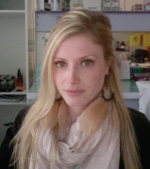
Hélène Louis dit Picard
Paris, France
Talk: PL2.2 KLHL3 and Cullin-3 mutations cause Familial Hyperkalemic Hypertension by impairing ion transport in the distal nephron
Session: PL2 What's New?
Date: Saturday, June 23, 18:30 hrsDate and city of birth
12 May 1985, Evreux, France What is your current position?
PhD Student Why did you choose a career in genetics?
-Interest in participating to the identification of new causal genes or pathways, that may be useful for designing new therapeutic strategies
-Interest in inherited diseases and genetic counselling
-Importance of molecular medicine in the near future What is so interesting about the research you are presenting at ESHG 2012?
The genes regulating blood pressure and electrolyte metabolism are corresponding to ion transporters. Here we show two genes causing a mendelian form of hypertension with different modes of transmission and more importantly corresponding to proteins involved in a mechanism of regulation (ubiquitination) of ion transport that was not known yet. | |
| | | |
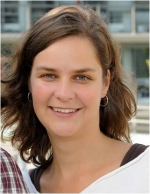 Kerstin Ludwig Kerstin Ludwig
Bonn, Germany
Talk: C14.4 First genome-wide meta-analyses of nonsyndromic cleft lip with or without cleft palate identify six new risk loci including one subtype-specific locus
Session: C14 Genomics of Common Disorders
Date: Tuesday, June 26, 11:00 hrs
Date and city of birth
02/04/1981, Dresden, Germany
What is your current position?
2nd year post-Doc, Institute of Human Genetics Bonn (Germany)
Why did you choose a career in genetics?
I enjoy working at the interface of medicine and (life) sciences, which enables discoveries that really mean something to someone. Seeing patients with severe phenotypes reminds you the sense of your work and brings your motivation back in times when no experiment yields any conclusive results.
What is so interesting about the research you are presenting at ESHG 2012?
I am working on nonsyndromic cleft lip with or without cleft palate, a highly variable phenotype (i.e., different identity and laterality of affected tissues). The study I am presenting identified the first genetic factor for one particular subtype and illustrates how much we can get out of GWAS data if we make use of detailed clinical information and enhance co-operational work. | |  Kornelia Neveling Kornelia Neveling
Nijmegen, Netherlands
Talk: C11.5 Mutations in C8orf37, encoding a ciliary protein, are associated with autosomal recessive cone-rod dystrophy and retinitis pigmentosa with early macular involvement
Session: C11 Neurological and Sensory Diseases: From Gene to Function
Date: Monday, June 25, 13:00 hrs
Date and city of birth
03-03-1979, Rheinberg (Germany) What is your current position?
I am postdoc at the Department of Human Genetics in Nijmegen, the Netherlands. As part of the ”˜translational research' team of this department, I am working on the implementation and improvement of next generation sequencing approaches in research and diagnostics. Our goal is to provide the best possible care for patients and their families with hereditary diseases.
Why did you choose a career in genetics?
I was 18 years old when I lost a good friend from Duchenne Muscular Dystrophy. From that time on I gained more and more interest in genetics. By working in translational research, I now have the possibility to make a little contribution to the improvement of genetic care for affected persons and their families.
What is so interesting about the research you are presenting at ESHG 2012?
By using a targeted NGS approach, we found a new disease-causing gene (C8orf37) to be associated with cone-rod dystrophy (CRD) and retinitis pigmentosa (RP), two clinically and genetically overlapping heterogeneous retinal dystrophies. These results demonstrate the power of NGS to identify new disease genes even for genetically heterogeneous disorders. |
| | | |
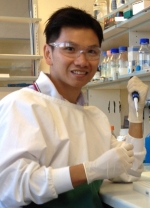 Lam Son Nguyen Lam Son Nguyen
North Adelaide, Australia
Talk: C13.3 Dosage imbalance of nonsense-mediated mRNA decay factors is associated with intellectual disability
Session: C13 Intellectual Disability: From Gene to Function
Date: Tuesday, June 26, 11:00 hrs
Date and city of birth
9th April 1984 What is your current position?
PhD student Why did you choose a career in genetics?
I'd like to make a difference to the quality of life of individuals with genetic disorders and I enjoy the challenges that come with it. What is so interesting about the research you are presenting at ESHG 2012?
This work implicated novel members of the nonsense-mediated mRNA decay pathway, a crucial regulator of the transcriptome, as the causes and/or pre-disposing factors to neuro-developmental disorders. It will improve the diagnosis of these disorders which in turn will benefit the patients and their families. | | 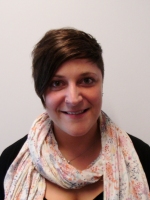 Esther Pohl Esther Pohl
Cologne, Germany
Talk: PL2.4 A novel molecular and functional mechanism predisposing to ototoxicity
Session: PL2 What's New?
Date: Saturday, June 23, 18:30 hrs
Date and city of birth
13.04.1982, Dueren What is your current position?
PhD student Why did you choose a career in genetics?
For me, the field of genetics and especially human genetics displays one of the most interesting research fields because of the combination of medical and biological aspects. Via identification of disease genes general and pathophysiological mechanisms due to protein dysfunction can be unmasked to finally develop and improve therapeutic strategies. What is so interesting about the research you are presenting at ESHG 2012?
We show for the first time that dysfunction of an actin remodeling protein can result in a drug-inducible disturbance of actin dynamics and aminoglycoside induced hearing impairment. As aminoglycosides are the most commonly used antibiotics worldwide these findings will help in devising strategies to counteract this severe side-effect of aminoglycosides. |
| | | |
Cyril Pottier
Rouen, France
Talk: C11.1 High frequency of potentially pathogenic SORL1 mutations in autosomal dominant early-onset Alzheimer disease
Session: C11 Neurological and Sensory Diseases: From Gene to Function
Date: Monday, June 25, 13:00 hrs Date and city of birth
March 10th, 1985, Clamart (France) What is your current position?
PhD student Why did you choose a career in genetics?
I have always been interested in understanding why one variation could lead to a disease whereas we all carry a lot of begnin variants. Genetics is a really passionate field in how you can study and understand the pathophysiology of a disease. What is so interesting about the research you are presenting at ESHG 2012?
Some cases of early onset forms of AD are caused by mutations in the amyloid precursor protein (APP), presenilin-1 (PSEN1) and PSEN2 genes. Our work is to identify new genes responsible for these forms. Here I will present the first exome analysis on autosomal dominant early onset Alzheimer disease using a recurrence-based strategy. We identify a gene that may be poised to join the ranks of the few that are responsible for some early-onset AD forms. | | 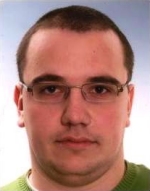
Lutz Priebe
Bonn, Germany
Talk: C08.5 Mapping genetic and epigenetic factors influencing human hippocampal gene expression
Session: C08 Functional Genomics
Date: Monday, June 25, 13:00 hrsDate and city of birth
15.07.1982, Troisdorf, Germany What is your current position?
I am a PhD student at the Institute of Human Genetics, Department of Genomics. The focus of my studies is on neuropsychiatric genetics. Why did you choose a career in genetics?
The combination between basic research and patient care. What is so interesting about the research you are presenting at ESHG 2012?
The focus of our work is on the combination of genotype and expression data from pre-mortem human brain. Our results provide a great resource for understanding CNS phenotypes. |
| | | |
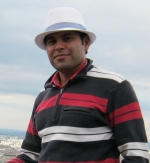 Hamid Razzaghian Hamid Razzaghian
Uppsala, Sweden
Talk: C04.4 Age-related somatic structural changes in the nuclear genome of human blood cells
Session: C04 Cytogenetics
Date: Sunday, June 24, 13:00 hrs
Date and city of birth
15 July 1981, Mashhad, Iran
What is your current position?
I am a third year PhD student at the department of Immunology, Genetics and Pathology at Uppsala University.
Why did you choose a career in genetics?
I have been interested in Genetics since my high school time. I have always been interested to know about Genetic of human diseases and to me this field is absolutely amazing and challenging.
What is so interesting about the research you are presenting at ESHG 2012?
Using age-stratified cohorts of monozygotic twins and single-born subjects, we describe age-related accumulation of copy-number variation in the nuclear genomes in vivo and frequency changes for both megabase- and kilobase-range variants. The recurrent rearrangements uncovered here are candidates for common age-related defects in human blood cells. Our work might also help to explain the cause of an age-related reduction in the number of cell clones in the blood; such a reduction is one of the hallmarks of immunosenescence. | | 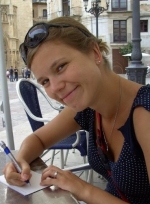
Dorien Schepers
Edegem, Belgium
Talk: C01.3 Loss of function mutations in TGFB2 cause Loeys-Dietz syndrome
Session: C01 New Genes and New Therapies in Clinical Genetics
Date: Sunday, June 24, 13:00 hrsDate and city of birth
21/04/1988, Antwerp What is your current position?
Last September I started my PhD at the Center for Medical Genetics, more specific at the lab for aneurysm research, at the University of Antwerp. Why did you choose a career in genetics?
Genetics just amazes and surprises me every single time. How extraordinary is it that one nucleotide change at a certain position in the genome can cause a disease phenotype! Also, there are so many questions that still need to be resolved or pathways to be discovered, so there is still enough work to do. Genetic research is also evolving really fast, just think about next generation sequencing. In this way you are not only challenged to apply your knowledge and know how every day, but you will also learn new things. But the main reason I choose a career in genetics is that I can help people in this way. As my boyfriend often says to me when I leave for work in the morning: “Go and save the world Dorien!”. I know he is exaggerating then but deep inside I hope I can contribute to this, even when it's just a bit. What is so interesting about the research you are presenting at ESHG 2012?
Due to our research more insight is gained in the complex world of the TGFβ pathway. When we will have unraveled the complete pathway it will create new possibilities to identify targets to develop a treatment for aortic disease. | |
| | | |
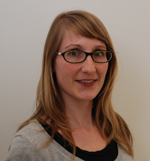 Anna Schossig Anna Schossig
Innsbruck, Austria
Talk: C18.5 Mutations in ROGDI cause epileptic encephalopathy and amelogenesis imperfecta (Kohlschütter-Tönz syndrome)
Session: C18 Ectodermal Diseases: From Gene to Function
Date: Tuesday, June 26, 11:00 hrs
Date and city of birth
March 20th 1982 in Bremen, Germany What is your current position?
Resident, Medical Genetics (2nd year), Dept. of Human Genetics Innsbruck
Why did you choose a career in genetics?
I've always been fascinated by the details of molecular genetics. Working in in the clinical genetics I appreciate the obligatory interdiciplinarity, the broad field of resposibilities, and working at the interface between patient care and research.
What is so interesting about the research you are presenting at ESHG 2012?
We could show for the first time that Kohlschütter-Tönz syndrome is caused by mutations in the gene ROGDI. These findings are of importance to the affected families who can be finally offered a reliable diagnostic tool. Elucidating the genetic basis of this rare disorder characterized by epilepsy, mental retardation, and amelogenesis imperfecta brings up ROGDI as a so far unknown factor in neuronal as well as dental development. | | 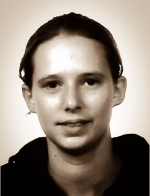 Julie Soblet Julie Soblet
Brussels, Belgium
Talk: C01.4 Identification of the cause of Blue Rubber Bleb Nevus Syndrome
Session: C01 New Genes and New Therapies in Clinical Genetics
Date: Sunday, June 24, 13:00 hrs
Date and city of birth
06/12/1985, Marche-en-Famenne (Belgium) What is your current position?
PhD Student Why did you choose a career in genetics?
I have always been interested in understanding human disorders by studying the underlying genetics. I think that this is a good way to improve diagnosis, as well identify pathogenic pathways that represent potential therapeutic targets. What is so interesting about the research you are presenting at ESHG 2012?
We demonstrated unequivocally that BRBN is caused by post-zygotic somatic activating mutations in TIE2, making it part of a spectrum of developmental defects of the venous compartment that are mediated by this endothelial cell tyrosine kinase receptor. | |
| | | |
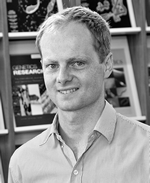 Malte Spielmann Malte Spielmann
Berlin, Germany
Talk: C03.1 Arm to Leg Transformation in Humans associated with CNVs at the PITX1 locus
Session: C03 Skeletal Disorders: From Gene to Function
Date: Sunday, June 24, 13:00 hrs
Date and city of birth
26.01.1981, Berlin, Germany
What is your current position?
Training in medical genetics/ postdoc in the Department of Medical and Human Genetics at Charité Universitätsmedizin, Berlin Why did you choose a career in genetics?
To me human genetics offers the opportunity to combine clinical patient care with my interest in basics science. In human genetics one has the unique possibility to investigate a disease from the phenotype all the way to the molecular defect and translate the findings back to the clinic.
What is so interesting about the research you are presenting at ESHG 2012?
We report for the first time an arm to leg transformation phenotype in humans. The phenotype is associated with structural variations of conserved non-coding elements (CNEs) at the PITX1 locus. Our findings further highlight the role of CNEs as a novel mutation mechanism for human disease. | | Isabel Spier
Bonn, Germany
Talk: C10.2 Deep intronic APC mutations explain a substantial proportion of patients with familial or early onset adenomatous polyposis
Session: C10 Clinical Aspects in Cancer Genetics
Date: Monday, June 25, 13:00 hrs Date and city of birth
04/11/1982 in Tettnang/Germany What is your current position?
I´m a resident at the Institute of Human Genetics in Bonn Germany, doing my specialist training in Human Genetics, and a postdoc researcher in the field of hereditary polyposis syndromes. Why did you choose a career in genetics?
I was interested in genetics since my schooltime. During my studies I was very fascinated by the fact that there are a lot of (rare) diseases which are caused by genetic changes. So it is a perfect combination for me to be involved in patient care and doing biomedical research. What is so interesting about the research you are presenting at ESHG 2012?
With a systematic APC mRNA analysis we could detect deep intronic APC mutations, which were not detectable by routine diagnostic methods. Thus, these deep intronic mutations are more important than previously thought. These findings should also prompt other researchers to do such an analysis in further genes. |
| | | |
Asbjorg Stray-Pedersen
Houston, United States
Talk: C15.4 The utility of exome sequencing in Primary Immunodeficiency Diseases and Immunodysregulative Disorders
Session: C15 Next Generation Approaches to Heterogeneous Disorders
Date: Tuesday, June 26, 11:00 hrs <link _blank external-link-new-window> Add your profile Add your profile | | 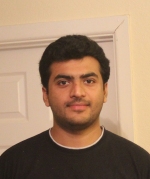 Praveen Surendran Praveen Surendran
Dublin, Ireland
Talk: C14.6 Genome-Wide Association Analysis Identifies the MTHFR-CLCN6-NPPA-NPPB Gene Cluster as an Importance Influence on BNP Levels - Implications for the Use of BNP levels in the Diagnosis and Therapeutic Monitoring of Heart Failure.
Session: C14 Genomics of Common Disorders
Date: Tuesday, June 26, 11:00 hrs
Date and city of birth
21/11/1983 - Thodupuzha, India. What is your current position?
PhD Student Why did you choose a career in genetics?
I was always intrigued by the way genetic architecture of human beings work and how the very minute changes in this arrangement cause aberrations in the normal behaviour of the human system. These influenced my decision to do a PhD in genetics where I can work on these interesting micro molecular details and possibly contribute to our understanding of diseases and eventually translate these genetic findings into improved patient care. What is so interesting about the research you are presenting at ESHG 2012?
This work is the first study which investigates thre relationship between genetic variants associated with Brain Natriuretic Peptide (BNP) levels with Left Ventricular (LV) Filling pressures. Variations in LV filling pressures are clinically important and is widely used in the management of heart failure and in cardiovascular risk assessment. Currently clinical BNP levels alone is used as a marker of LV filling pressure. In this study we have identified that genetic variants associated with BNP levels are independent of LV filling pressures and hence combining genotype information with BNP measurements may provide improved sensitivity and specificity to the algorithms that use BNP levels in the diagnosis and management of heart failure. |
| | | |
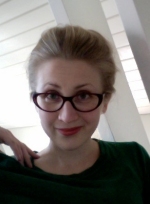 Taru Tukiainen Taru Tukiainen
Helsinki, Finland
Talk: C05.3 Detailed metabolic and genetic characterization of known lipid loci
Session: C05 Dissecting Complex Traits
Date: Sunday, June 24, 13:00 hrs
Date and city of birth
10 March 1983, Helsinki, Finland What is your current position?
I am a postdoctoral researcher at the Institute for Molecular Medicine Finland at the University of Helsinki. Why did you choose a career in genetics?
Sweet serendipity. I started working on a PhD on metabolomics, but a couple of years ago, through a collaborative project, I found myself combining that technology with genetics. Nevertheless, I realized genetics is a fascinating branch of science and therefore decided to continue my research career in this field. What is so interesting about the research you are presenting at ESHG 2012?
The combined use of detailed metabolomics and genetics data allowed us to shed further light on the biology underlying the known lipid loci. With a relatively small sample size we uncovered associations not captured by the large lipid GWASs thus emphasizing the value of well-defined phenotypes and dense coverage of genetic variation. | | 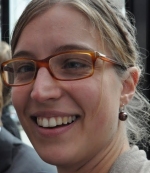 Jeske van Harssel Jeske van Harssel
Utrecht, Netherlands
Talk: C18.1 Dominant missense mutations in potassium channel cause Cantú syndrome.
Session: C18 Ectodermal Diseases: From Gene to Function
Date: Tuesday, June 26, 11:00 hrs
Date and city of birth
1984, the Netherlands What is your current position?
Clinical geneticist in training, Department of Medical Genetics, University Medical Center Utrecht Why did you choose a career in genetics?
Genetics is a fantastic, challenging, interesting, important field to work in. What is so interesting about the research you are presenting at ESHG 2012?
exciting opportunity, the collaboration with all involved researchers and clinicians, identifying the causative gene for Cantu syndrome, potential to implications for the treatment of patients with Cantu syndrome |
| | | |
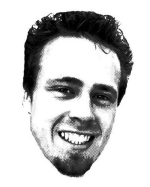 Harm-Jan Westra Harm-Jan Westra
Groningen, Netherlands
Talk: C17.6 eQTL mapping in 5,300 blood samples reveals downstream pathways in non-hematological traits
Session: C17 Statistical Genetics
Date: Tuesday, June 26, 11:00 hrs
Date and city of birth
23/04/1984, Beetgumermolen, The Netherlands
What is your current position?
PhD-Student Why did you choose a career in genetics?
In my opinion, different sources of biological data should be integrated to achieve some kind of insight in the processes underlying traits and diseases. Since the origin of most of these traits is transcribed in our genes, I chose genetics as a starting point of my integrative biological exploration. What is so interesting about the research you are presenting at ESHG 2012?
By combining variation in gene expression levels with variation on genotype level, we are able to detect downstream effects of genotypes associated with traits. These effects can be subsequently used for follow-up analyses in other molecular sources of data such as methylation, metabolites, and protein levels. | | 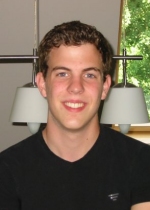
Thomas Wieland
Neuherberg, Germany
Talk: C13.2 Identification of de novo variants in 51 sporadic patients with unspecific severe intellectual disability and 20 controls by exome sequencing
Session: C13 Intellectual Disability: From Gene to Function
Date: Tuesday, June 26, 11:00 hrsDate and city of birth
June 12th 1986 in Scheibbs/Austria What is your current position?
I am a second year PhD student in bioinformatics at the Institute of Human Genetics at the Helmholtz Center Munich. Currently, I am working mostly on the analysis of Next Generation Sequencing experiments. Why did you choose a career in genetics?
In my opinion the field of genetics and especially of Next Generation Sequencing presented the most interesting and challenging opportunities for me as a bioinformatician. What is so interesting about the research you are presenting at ESHG 2012?
We were able to detect de novo variants in the vast majority of our cases. This allowed us to find likely causal mutations in formerly undiagnosed patients as well as putatively novel candidate genes for intellectual disability, which might provide new insights into this very heterogeneous disease. |
| | | |
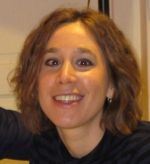 Marjolein Willemsen Marjolein Willemsen
Nijmegen, Netherlands
Talk: C15.1 Identification and characterization of genetic disorders with ID in diagnostics and diagnostic related research
Session: C15 Next Generation Approaches to Heterogeneous Disorders
Date: Tuesday, June 26, 11:00 hrs
Date and city of birth
February 28, 1981
What is your current position?
I'm a clinical geneticist in training at the department of Human Genetics in Nijmegen, The Netherlands. In addition, I am completing my PhD thesis on the identification and definition of rare genetic disorders with ID, which I hope to defend in the autumn of this year. Why did you choose a career in genetics?
First of all, I like the opportunity to combine and link genetic research with the care for patients and their families. It is also a pleasure to collaborate with many different disciplines in the lab and in the clinics. Furthermore, it is great to be part of the fast moving and exciting field of genetics. What is so interesting about the research you are presenting at ESHG 2012?
I will present the results of present day clinical and genetic investigations in an unique and phenotypically well-defined cohort of mainly adult individuals with unexplained intellectual disability (ID). During this study we identified and defined novel ID syndromes. In addition we were able to further delineate phenotypes of known rare ID syndromes, including evolution across life span. | | 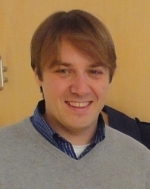 Thomas Winkler Thomas Winkler
Regensburg, Germany
Talk: C06.2 Genome-wide search for gender different genetic loci for human anthropometric traits: Methods and results from genome-wide meta-analyses across 270,000 Individuals
Session: C06 Genome Evolution and Variation
Date: Sunday, June 24, 13:00 hrs
Date and city of birth
05/10/1981, Regensburg
What is your current position?
PhD Student at the Institute of Epidemiology and Preventive Medicine, Regensburg Why did you choose a career in genetics?
As a mathematician, I am particularly interested in the large variety of statistical models applied in genetics as well as in developing tools to analyse high-dimensional genetic data-sets. I am fascinated by the interplay between mathematics, biology and informatics that advance the knowledge about the genetic basis of complex diseases. What is so interesting about the research you are presenting at ESHG 2012?
Despite the obvious differences between men and women regarding anthropometric traits, it is not yet known to what extent genetic associations differ between sexes. The results of our systematic genome-wide search for sexual dimorphic variants for anthropometric traits can help to better understand these differences. | |

 Katy Barwick
Katy Barwick Bert Callewaert
Bert Callewaert Martha Castano-Betancourt
Martha Castano-Betancourt Eleonora de Klerk
Eleonora de Klerk Nady El Hajj
Nady El Hajj Tõnu Esko
Tõnu Esko Laurent Francioli
Laurent Francioli Lars Fritsche
Lars Fritsche Lutz Garbes
Lutz Garbes Javier Gutierrez-Achury
Javier Gutierrez-Achury Maria Gutierrez-Arcelus
Maria Gutierrez-Arcelus
 Muhammad S. Hussain
Muhammad S. Hussain Rie Kawamura
Rie Kawamura Katharina Keupp
Katharina Keupp David Koolen
David Koolen


 Kerstin Ludwig
Kerstin Ludwig Kornelia Neveling
Kornelia Neveling Lam Son Nguyen
Lam Son Nguyen
 Hamid Razzaghian
Hamid Razzaghian
 Anna Schossig
Anna Schossig Julie Soblet
Julie Soblet Malte Spielmann
Malte Spielmann Praveen Surendran
Praveen Surendran Taru Tukiainen
Taru Tukiainen Harm-Jan Westra
Harm-Jan Westra